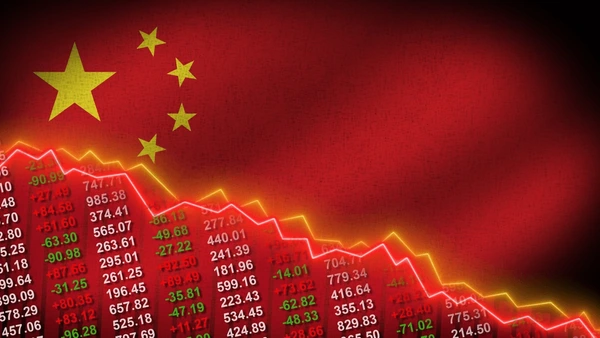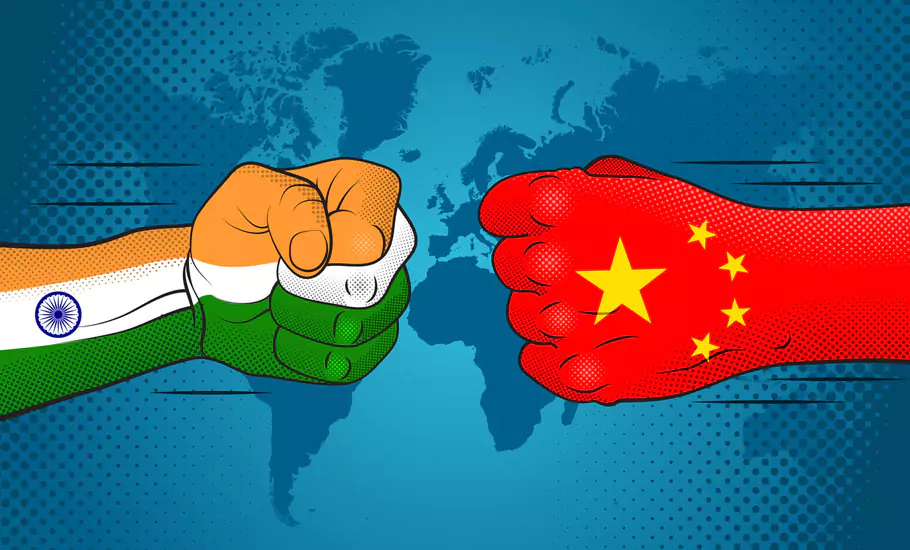Impact of China’s Economic Slowdown on Indian Markets
China’s economy, the second-largest in the world with a GDP of $19.53 trillion, has been experiencing a slowdown since mid-2023. The slowdown is characterized by reduced domestic consumption, a property market crisis, declining industrial output, and weakening global trade performance. With China's real GDP growth expected to drop to 2.8% in 2024 and unlikely to exceed 4.5% in 2025, the ripple effects are being felt across global markets — including India.
India’s economy has historically been intertwined with China’s due to significant trade relations, foreign direct investment (FDI) flows, and the global supply chain structure. The reduced demand from China is already affecting India's exports and industrial output, while prompting Indian firms to explore alternative markets and supply chain structures. This analysis explores the extent of the impact on Indian markets, sectoral vulnerabilities, and strategic adjustments being made by Indian businesses and policymakers.
Background and Context
China’s Economic Performance and Slowdown
China’s economy has been facing several structural and cyclical challenges:
- GDP Growth:
- 2022: 3.0%
- 2023: 5.2%
- 2024: Estimated at 8% (lowest since the 1970s)
- 2025: Growth expected to remain under 5%
- Causes of Slowdown:
- Deepening property market crisis (Evergrande default).
- Weak domestic consumption and high household debt.
- Declining global demand for Chinese exports.
- Rising production costs due to increased labor and material expenses.
- Geopolitical tensions (US-China trade war, Taiwan conflict).
India-China Trade Relations
- China is India’s largest trading partner, accounting for $118.4 billion in bilateral trade in 2023.
- India’s trade deficit with China reached a record high of $83.2 billion in 2023 due to higher Chinese imports.
- China supplies over 30% of India’s imports in sectors such
as:
- Electronics (mobile phones, semiconductors).
- Pharmaceuticals (active pharmaceutical ingredients - APIs).
- Machinery and industrial equipment.
- Steel and chemicals.
Impact of China's Economic Slowdown on Indian Markets
The slowdown in China is affecting Indian markets in three major ways:
Reduced Demand for Indian Exports
The decline in Chinese consumption and manufacturing output is affecting India's exports:
| Sector | Impact | 2023 Export Volume | Change Expected in 2024–2025 |
|---|---|---|---|
| Pharmaceuticals | Reduced demand for Indian generic drugs due to lower healthcare spending in China | $4.3 billion | -10% |
| Petrochemicals | Slower industrial activity reducing demand for petrochemical imports | $3.2 billion | -8% |
| Cotton and Textiles | China is India’s largest market for raw cotton; lower manufacturing output is reducing demand | $1.9 billion | -12% |
| Steel | Surplus production in China pushing down global steel prices, reducing India's export margins | $1.5 billion | -15% |
| IT and Software Services | Reduced demand for Indian outsourcing and software exports | $2.8 billion | -5% |

Overall Impact:
- Indian exports to China are expected to fall by 12%–15% in 2024 and 2025.
- Trade deficit with China could shrink to $75–80 billion due to reduced import volumes.
Supply Chain Disruptions and Realignments
India is heavily reliant on Chinese imports for critical components and raw materials:
- Electronics and Semiconductors
- Over 50% of electronic components used in India (e.g., mobile phones) are imported from China.
- Supply disruptions are leading to higher production costs for Indian manufacturers (e.g., Tata Electronics).
- Government of India’s PLI scheme for semiconductor manufacturing aims to reduce reliance on China by 2026.
- Pharmaceuticals
- Over 70% of APIs used by Indian pharmaceutical companies come from China.
- Reduced production in China is causing shortages and price increases.
- India is promoting domestic API manufacturing under the Production Linked Incentive (PLI) scheme.
- Solar Panels and Renewable Energy
- Over 80% of solar modules used in India are imported from China.
- India's domestic solar manufacturing sector is expected to grow under the PLI scheme for solar cells and modules (₹24,000 crore investment).
- Supply Chain Realignment:
- Increased sourcing from Southeast Asia (Vietnam, Indonesia, Thailand).
- Increased reliance on domestic production under "Make in India" and "Atmanirbhar Bharat" initiatives.
- India's total imports from China are expected to decrease by 5%–8% in 2024–2025.
Capital Flows and Foreign Direct Investment (FDI)
- Reduced Chinese Investment in India
- Chinese FDI in India fell from $6.2 billion in 2020 to $4.6 billion in 2023.
- Geopolitical tensions (border conflicts) and increased security scrutiny over Chinese investments have discouraged capital inflows.
- In 2024–2025, Chinese investment in India is expected to fall by another 10%–12%.
- Increase in Investment from Alternative Sources
- Increased investment from Japan, South Korea, and Taiwan in electronics, automotive, and renewable sectors.
- India received over $9.7 billion in FDI from Japan and South Korea in 2023.
- India is becoming a preferred destination for supply chain diversification, particularly in electronics and semiconductors.
Sector-Specific Impact and Adjustments
Technology and Electronics
- India's semiconductor imports from China are expected to decrease by 15% in 2024–2025.
- Domestic production is increasing under the Semiconductor Manufacturing Incentive Scheme (₹76,000 crore).
- Tata Group and Foxconn are setting up semiconductor plants in Tamil Nadu and Gujarat.
Pharmaceuticals
- India’s pharmaceutical exports to China are projected to decline by 10% in 2024.
- India is setting up three API manufacturing hubs under the PLI scheme.
Renewable Energy
- India's domestic solar panel production is expected to increase by 25% in 2024 and 40% in 2025.
- Dependence on Chinese imports for solar modules is projected to decline to 50% by 2025.
Auto Industry
- Supply of lithium-ion batteries from China may decline, affecting electric vehicle (EV) production.
- Increased domestic production of EV batteries under the PLI scheme is expected by 2025.
Future Outlook (2025 and Beyond)
| Indicator | 2023 | 2024 (Projected) | 2025 (Projected) |
|---|---|---|---|
| GDP Growth (India) | 7.2% | 6.8%–7.0% | 7.0%–7.2% |
| Trade Deficit with China | $83.2B | $75–80B | $70–75B |
| Semiconductor Imports from China | 50% | 40% | 30% |
| FDI from China | $4.6B | $4.0B | $3.5B |
China’s economic slowdown is creating both challenges and opportunities for India. While reduced demand from China is negatively impacting Indian exports, it is also accelerating India's shift toward domestic production and supply chain diversification. The Indian government's strategic initiatives in manufacturing, renewable energy, and pharmaceuticals are positioning the country to reduce reliance on China and emerge as a global economic powerhouse.













